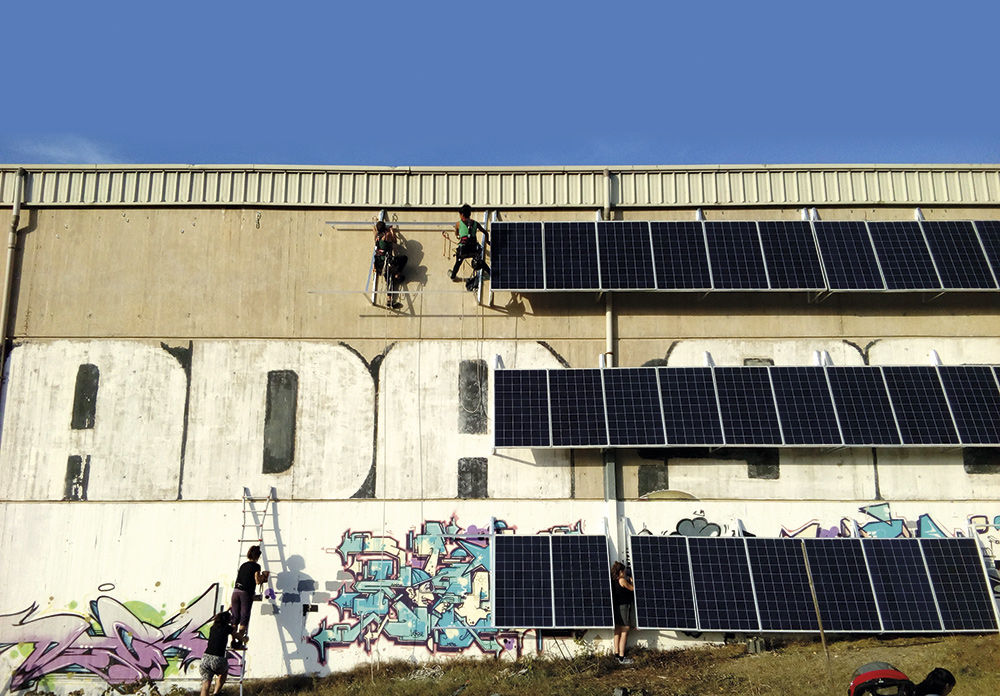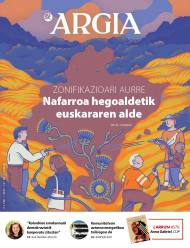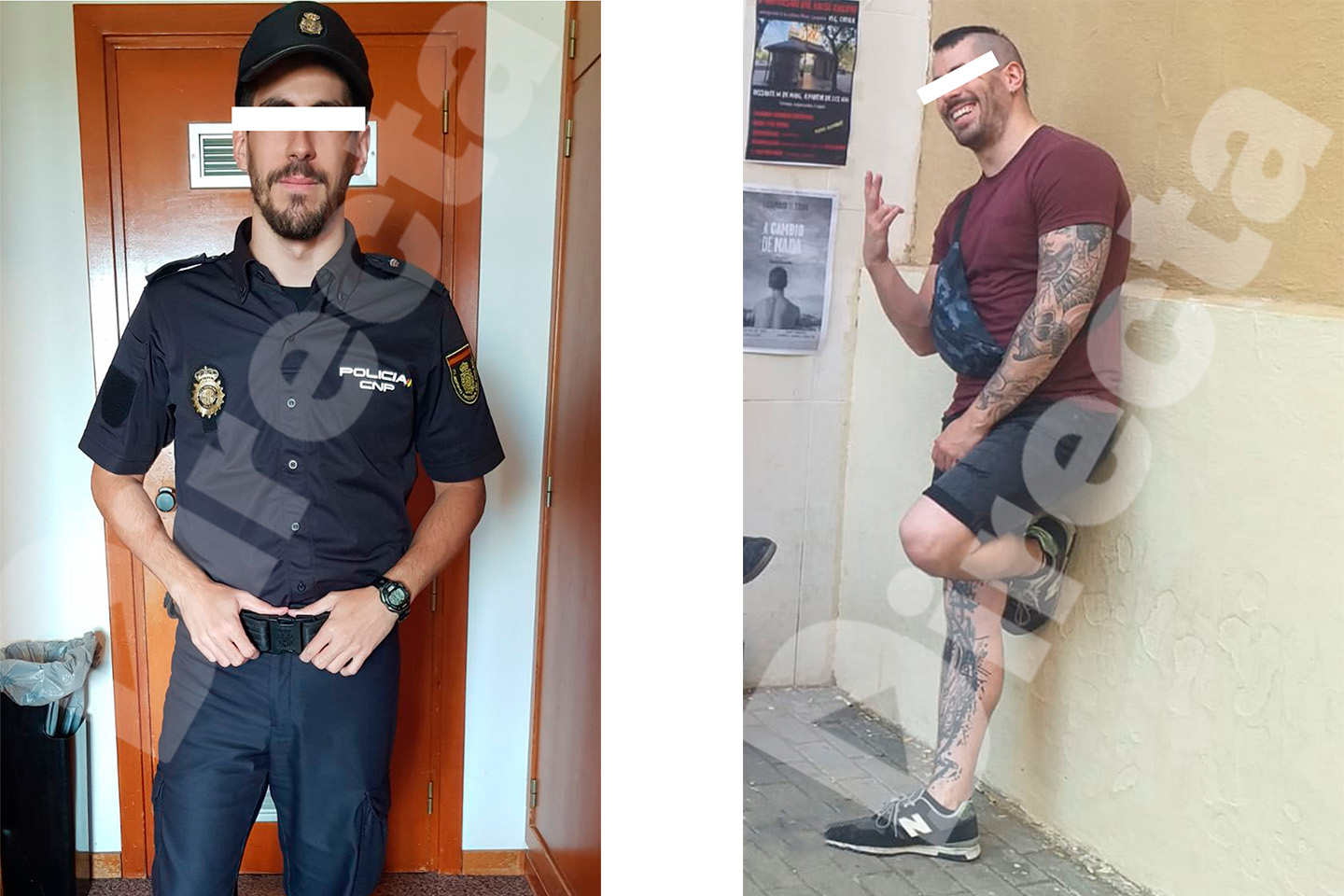Community as a lever to reduce energy consumption
- Consumerism is one of the most important “isms” today. We are so deeply rooted that the unlimited consumption of many products has led our society to a resource crisis. Likewise, the energy model linked to production is in a critical situation, reaching wars for access to energy resources. In order to move forward as a society, it is essential to reduce the energy consumption of the countries of the Global North. How can this be achieved? The members of the Ekopol and Life Cycle Thinking Group of the UPV/EHU have conducted a study in the Errekaleor free district of Vitoria-Gasteiz. We are aware that an alternative and community lifestyle can reduce energy consumption due to the importance of energy used in the production of goods and services.

According to data from the International Energy Agency (IEA), the primary energy consumed by every inhabitant of the world in 2018 was 21.8 MWh on average. However, according to a study by the University of Leeds, in order not to exceed the sustainable energy limit of planet Earth, it is necessary to reduce consumption by at least half, to 10.8 MWh per inhabitant per year. In this respect, appropriate indicators are needed to check whether we are reducing energy use. Generally, the indicator "total primary energy supply" is used to measure a country's energy consumption. The data provided by the EIA accounts for the total energy consumption within a country (residential, transport, industry and services).
This indicator does not take into account hidden energy flows, i.e. energy used to produce products and services imported from other countries. As goods and services are produced in the countries of the Global South and consumed in the countries of the Global North, if hidden energy flows are not taken into account, it appears that energy consumption in some countries (in general, in the Global North) is lower than its own consumption. And vice versa, that the countries of the Global South consume more energy than it really is, when much of this consumption is actually used to produce products that are oriented to the countries of the Global North.
Thus, the "energy footprint" indicator takes into account not only the total primary energy to be allocated to each country, but also the hidden energy flows. The study calculated the energy footprint of the CAPV and the free neighborhood Errekaleor, in order to clarify the factors that influence this indicator.
Producing food, recycling, repairing clothes and others, free shops… are factors that reduce the energy footprint
Errekaleor is a busy neighborhood on the outskirts of Vitoria. They live about 100 people feeding a project based on self-management and assembly. In 2017, by order of the City Hall of Vitoria-Gasteiz and with the support of the police forces, the company Iberdrola left the whole neighborhood without light. Starting in 2018, the neighborhood is electrically independent thanks to a photovoltaic system launched thanks to the collaboration of the neighbors and the crowdfunding campaign, sponsored by the citizens. Since then, the largest energy island in the Basque Country illuminates the Errekaleor district.
To calculate the energy footprint of the free neighborhood, in addition to collecting the energy consumption (or direct energy consumption) that occurs in homes and cars, we receive the 2019 economic expenses of 40 neighbors to calculate the energy (or indirect) consumption associated with products and services. At that time, 116 people participated in the project, distributed in three types of housing: 4-10 people occupying a whole block, what we have called "communities"; 2-3 people in a home, what they call "family" (not nuclear); and a single person occupying a home, "individuals".
Higher direct consumption
For a proper understanding of the results, a distinction should be made between direct energy consumption, both in households and in private vehicles, and indirect consumption, integrated in products and services.
.jpg)
Indeed, it should be noted that direct energy consumption in Errekaleor is higher than in the Basque Country and the State. Of the total energy footprint of a neighborhood resident, fuel used in private vehicles accounts for 19%. On average, a neighbor of Errekaleor consumes 6 MWh a year in cars, more than the Spanish State’s heritages. Likewise, although it may be surprising, the energy consumption of Errekaleor housing is higher than that of the Spanish state and the CAPV, with an increase of 20% and 45% respectively. An individual consumes an annual average of 4.5 MWh, which is 14% of the total energy footprint. This is due to poor insulation of housing and inefficient heating systems. Likewise, the energy sources consumed in the dwellings are different. While electricity and natural gas are mainly used in the Spanish State and the CAPV, Errekaleor wood is the most widely used (82% of consumption), which is necessary for heating housing. Butane (13%), PV systems (4%) and diesel emergency generator (1%) follow.
.jpg)
Thus, 86% of the energy consumption of Errekaleor housing comes from renewable sources. Its generation is also decentralised, avoiding the loss of transformation and transport of large electricity and gas infrastructures in the Spanish State and in the CAPV. However, if all the inhabitants of the CAPV consumed the same amount of wood as the neighbours of Errekaleor, although renewable, the capacity of the community forests would be exceeded by at least 10 per cent.
Thus, taking into account the percentages of the total energy footprint (19% in means of transport and 14% in homes), direct energy consumption is around 33%. Thus, 66% is transversal, with an energy footprint lower than that of Errekaleor, CAPV and the Spanish state.
Self-management
Looking at the total energy footprint, Errekaleor's energy footprint (31.10 MWh on average per inhabitant per year) is the lowest of three. This is due to energy consumption in products and services. In the Spanish state it represents 81% of the total energy footprint, in the CAPV 75% and in Errekaleor 66%. This shows that behind the material consumption of each person are the main factors that condition the energy footprint. The inhabitants of the free neighborhood demand and put into practice anti-capitalist behavior and self-management: habits such as the production or recycling of food, the repair of clothing and other products, the use of free shops or the purchase of local producers considerably reduce the energy footprint below the figures shown by the CAPV and especially the Spanish State.
Less footprint on the community than just
Finally, the energy footprint varies considerably depending on the type of housing. Single individuals (42.79 MWh) leave a higher energy footprint than people living in the community (28.84 MWh) or in the family (28.45 MWh). The neighbours of the last two groups are those who manage to reduce Errekaleor’s energy footprint, demonstrating that community life can reduce total energy consumption. Moreover, individuals who live alone have an average energy footprint higher than that of the CAPV population.
As seen in the chart below, the energy footprint of individuals is higher in all consumer sectors except public transport (called “Transport Services”). Private transport (Private Transport and Transport Equipment sectors) is particularly high in the areas of “Services”, “Housing” and “Construction, Maintenance and Repair”.
.jpg)
In the case of the footprint of the last two sectors, it is a direct consequence of living alone, because you have to use the same amount of energy to repair or heat a house, regardless of the number of people living in it. On the contrary, in all other sectors, the high energy footprint of individuals is attributed to private decisions that incorporate their lifestyle, such as buying and using a car. In most cases, these individuals are young people, unemployed family caregivers and recently incorporated into the labor market, whose purchasing power has increased in recent years.
Reducing consumption, essential
One of the reasons for this study would be the awareness of the high level of consumption of Basque society, as the average energy footprint of its inhabitants (40.9 MWh per person per year) is twice that of global consumption (21.8 MWh), which is quadruple of the necessary consumption (10.8 MWh) for a sustainable planet.
The community-based lifestyle and self-management has reduced the average energy footprint (31.1 MWh) of the population of Errekaleor. However, it should be further reduced so as not to exceed the limits of sustainability. In fact, both the consumerist culture of society and the structural conditions of capitalism are the main drivers of individual lifestyles. The inhabitants of Errekaleor, while living within the economic model of the CAPV, will hardly be able to revolutionize the energy paradigm. However, this study has shown that individual choices have influenced, as we will see the high energy footprint of individuals living alone.
On the other hand, it should be noted that the photovoltaic installation that has supplied electric energy to the Errekaleor neighborhood and has turned the free neighborhood into a symbol of the energy transition of the Basque Country, satisfies 4% of the energy consumption of Errekaleor dwellings, only 0.6% of the energy footprint of each inhabitant. Awareness highlights the lack of public energy transition policies to influence housing consumption. However, this facility directly affects the living habits of the residents, as it offers them a basic service such as electricity from the homes. Decentralised electricity and heating systems in homes also make energy a free neighbourhood more independent from big business and probably more prepared to deal with the crisis ahead.
Live record! Such transformative projects have their own characteristics that hinder the integration of the model in other places. It is true that some of the factors that influence the energy footprint are linked to the territory, such as domestic heating systems, solar panels or orchard, and the measures proposed, in general, seek some of them. However, as mentioned above, it has been found that most of the energy footprint corresponds to the hidden flow of energy integrated into products and services.
This is linked to consumption habits, in which all CAPV residents should potentially influence to reduce their energy footprint. In short, we know that there are no magic recipes to transform the current economic and energy model, but on the map to that desirable world that we have to build among all, Errekaleor's neighbors are drawing a possible path. A long road, because much remains to be done.
--------------------------------------------------------------
This report is based on the work published by the research groups of the UPV/EHU Ekopol and Life Cycle Thinking Group in the scientific journal Sustainable Production and Consumption. The full work is available here.
The main objective of journalism should be to obtain, treat, interpret and disseminate truthful information. It is hoped, therefore, that the journalist will not manipulate or lie a fact, for interest, fear or neglect, and that he will adequately tell all his knowledge about it... [+]
We have entered the election year and politicians have begun to campaign with our misery. So that we don't talk about their corruption, their benefits and their indifference, people will once again try to make us hostile to each other.
Lately they have been against the... [+]























